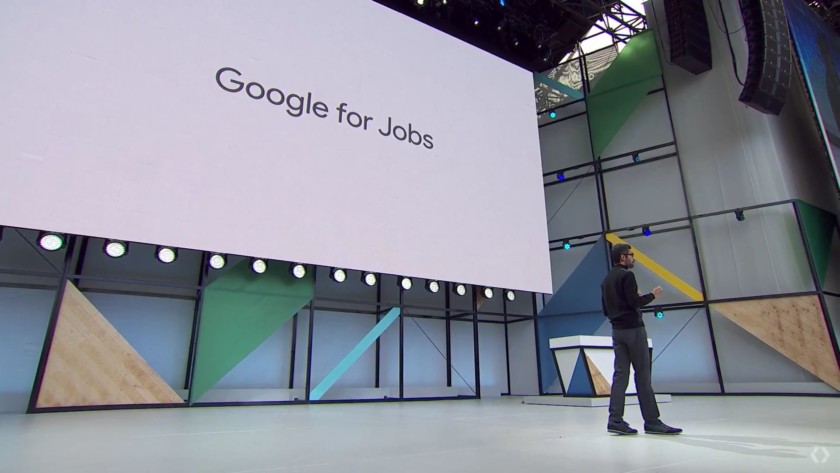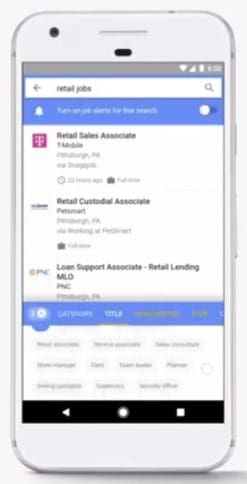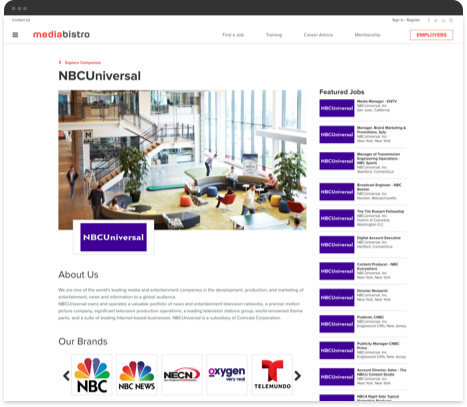On Tuesday, “Google launched Google for Jobs, a new initiative to help employers find better candidates and help job applicants find better jobs.

What does this search tool mean for HR, hiring managers and recruiters? We tried out Google for Jobs so you don’t have to.
Here are the pros and cons of Google for Jobs:
PRO

Google for Jobs essentially aggregates job listings from multiple search engines, including LinkedIn, Monster, WayUp, DirectEmployers, CareerBuilder, Glassdoor, and Facebook. It’s a nice way to put more job postings in one place.
CON
In our eyes, this is the greatest weakness of Google for Jobs, as well as other job listing aggregator sites:
The problem is candidates don’t want MORE job listings, they want the RIGHT job listing. And employers don’t want to be inundated with resumes by job seekers that are just spraying and praying – those that click “apply” to each and every job listing they see, even if they are not qualified.
Highly targeted job listing sites still have the advantage over Google — they know their audience, and their audience knows them.
PRO
Google for Jobs is easy for job seekers to use.
All they have to do is type their job related query into a regular Google search, using key phrases like “jobs near me,” “copywriting jobs,” “job listings,” etc. Google spits back a preview of the available jobs, and candidates can click to see a full results page.
CON
The results page leaves a lot to be desired. It’s a bare bones design, stripped of any imagery (and personality). We’d rather see Google focus on the Employer Brand part of the puzzle to help candidates make better decisions.

They could tap into Google Image Search to show photos of the employer’s office… or integrate social media channels to display the employer’s latest Facebook or Twitter content. However, they do none of that and there doesn’t seem to be any plans to focus on employer branding.
As a result, Google for Jobs lacks the ability to really help identify and reach passive job candidates – those not actively looking for jobs, but are still highly qualified.
PRO
Cloud Jobs API is another part of the Google for Jobs initiative. The API offers employers a “commute search,” which shows candidates what their commute would be like, and a sort of “industry jargon decipherer” that bridges the gap between job description lingo and applicant search terms.
CON
Cloud Jobs API is for web developers, not HR and recruiters who are on the ground, beating the bushes for talent. Do you know an HR manager who has the time to follow instructions like this?
“Simply insert your job content into a private tenant on the Google Cloud Platform and the Jobs API classifiers will get to work mapping your content to the pre-trained models.”
PRO
When job seekers see a role they like on Google for Jobs, the next step is to click a button that takes them to the external job listing website where the posting originated (i.e. Glassdoor, LinkedIn, etc.) They can apply for the job from there.
CON
Google isn’t streamlining the job application process, just the search results aspect. Candidates will still have to go through the slog of applying for jobs through multiple portals.
PRO
Google for Jobs eliminates redundant job listings in its search results, so candidates only see each open position listed once, even if employers have listed it on multiple sites.
CON
This is good for job seekers and a little weird for employers. After all, if you post your job on several websites (i.e. Monster, CareerBuilder, Facebook), Google will only show one of those results.
That means it’s only a matter of time before sites start paying Google big bucks to put their listing — not the others — front and center. This may eventually drive up the cost of posting jobs on websites like Monster, Glassdoor, CareerBuilder, etc.
WHAT NEXT?
We’re curious to see where Google goes with this new project. Right now, it’s a job listings aggregator that adds a bit of value for job seekers — but not much.
It’s hard to say how this will benefit employers because it’s more important to get your job in front of a targeted audience than a wide audience. You’re not looking for a thousand applicants —
you’re looking for one. The RIGHT one.
Can Google deliver with Google for Jobs? Time will tell. However, Google is notorious for rolling out new and “exciting” products, only to let them fall to the wayside after a short period of time – remember Google Glass? Google Wallet? Google Reader? – Yeh, where are they today?
Topics:
News





